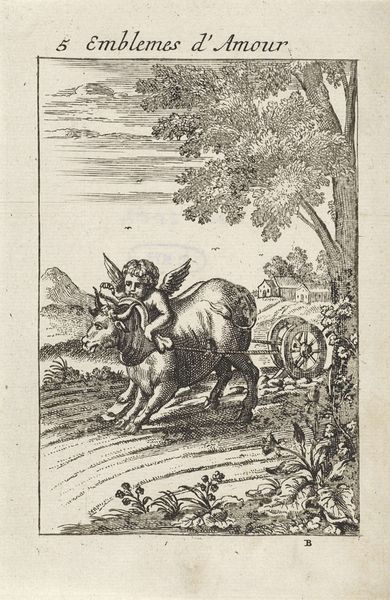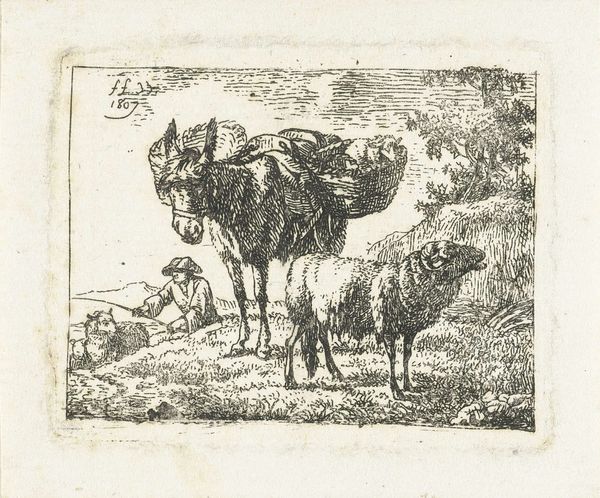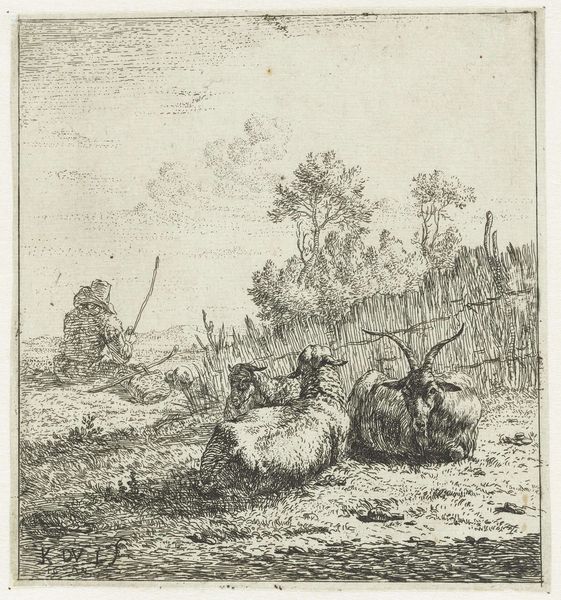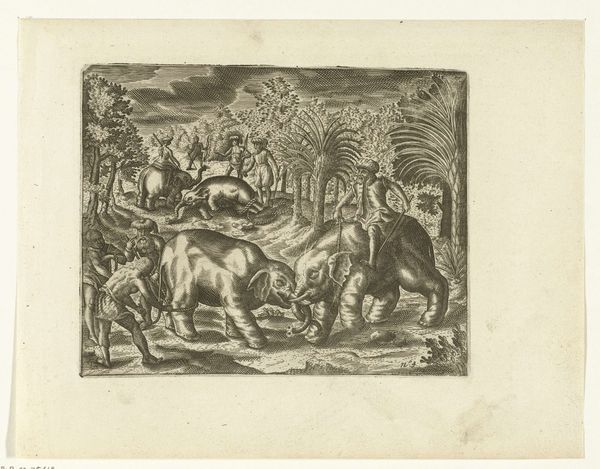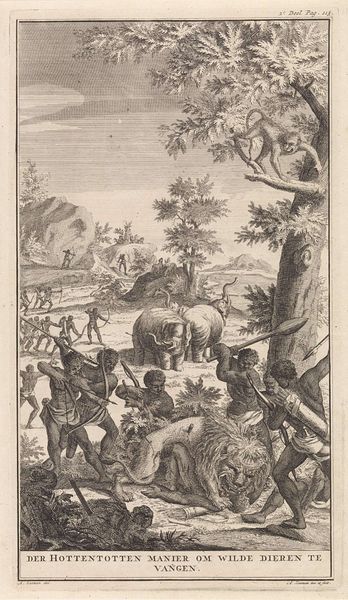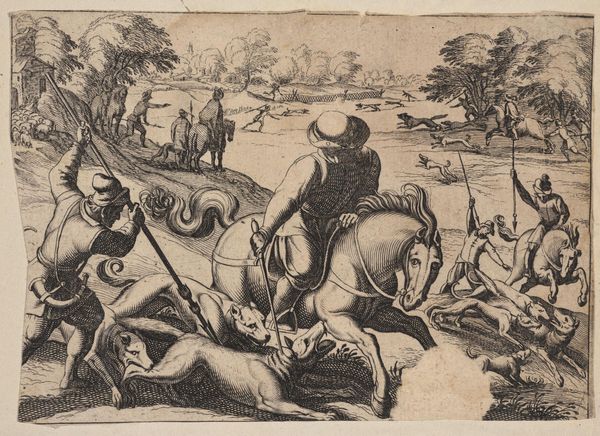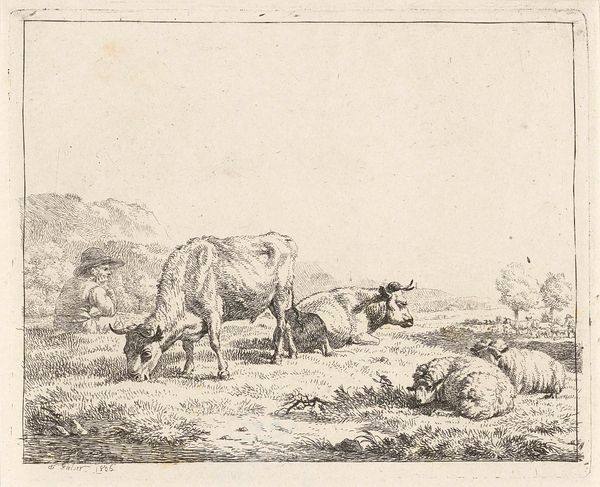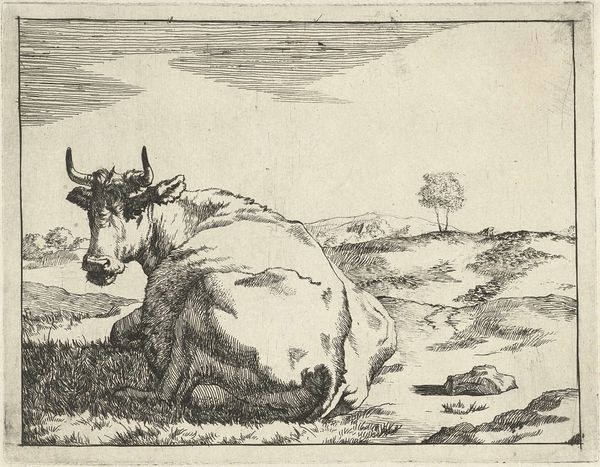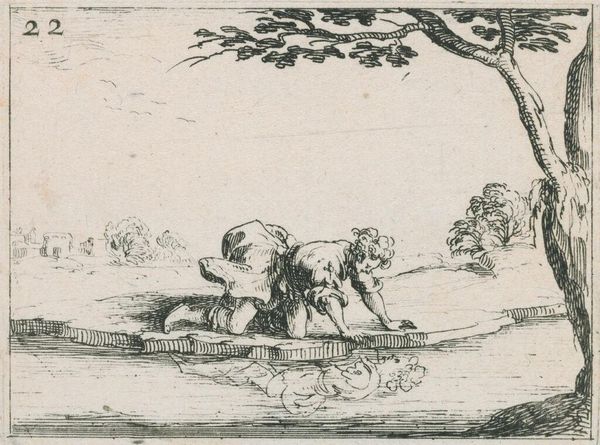
print, engraving
#
baroque
# print
#
landscape
#
figuration
#
genre-painting
#
engraving
Dimensions: height 111 mm, width 65 mm
Copyright: Rijks Museum: Open Domain
Curator: Here we have an engraving by Boëtius Adamsz. Bolswert, made sometime between 1590 and 1627. The title? "Willemynken Falls From Her Horse and a Farmer Plows the Field." It's part of the Rijksmuseum collection. Editor: My immediate impression is one of a bustling, yet strangely unbalanced, tableau. A drama unfolds in the foreground, while bucolic labor continues rather obliviously in the background. Curator: Precisely! Bolswert, working within the Baroque landscape tradition, is interested in contrasts, juxtaposing the foreground chaos with the ordered work of the field. The fall, which you can observe is quite theatrical, presents a disruption, a challenge to social decorum. Think about the symbolism of the horse—power, status—overturned. Editor: So, Willemynken’s tumble isn't just an accident; it’s a visual representation of social anxieties, maybe a gentle satire of the privileged? Meanwhile, in the background, that steady plowman anchors the scene, reaffirming the vital role of the working class within Dutch society at the time. Curator: I agree, and look even further. Do you notice the figures in the distant field, watching with…judgment? What do you think about that symbolic aspect of public opinion? It tells you, maybe Bolswert suggests some accountability for the fallen Willemynken. What kind of narrative you may infer? Editor: Absolutely! And there's also something fascinating about the technique, about how Bolswert employs engraving to construct social commentary. Those lines aren’t just describing a scene, but also etching a viewpoint on class, labor, and perhaps the precariousness of status. The sharp contrasts reflect on social and cultural issues from that period in Dutch History. Curator: Yes, the cross-hatching builds not only depth, but also a visual weight, almost a moral weight, wouldn’t you say? It seems like, despite the small scale, this print tells a rather expansive story about Dutch life and the burgeoning social dynamics within it. Editor: It does give much food for thought! In many ways this image offers a potent distillation of the period's socio-political landscape, reminding us how art acts as both a reflection and a quiet critique of its own time. Curator: Indeed! Art opens dialogues. Now I feel so inspired, thanks for your precious insights!
Comments
No comments
Be the first to comment and join the conversation on the ultimate creative platform.


